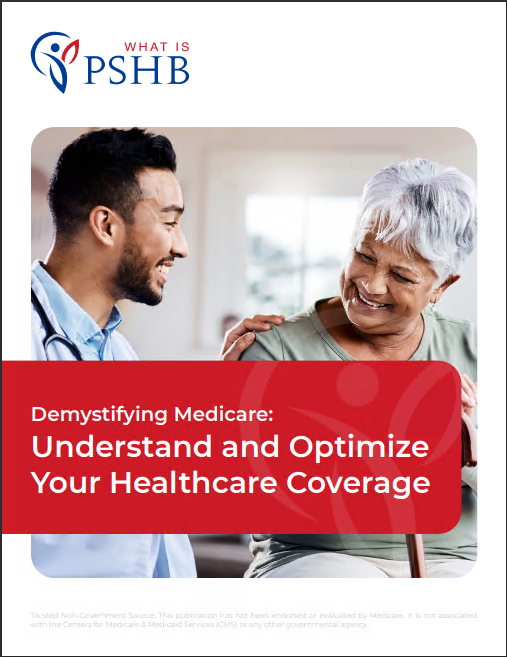Key Takeaways
- Preparation is Key: Take time to review and compare the new PSHB options to find what best fits your healthcare needs.
- Deadlines Matter: Don’t miss the Open Season, November 11 to December 9, 2024—decisions you make now will affect your health coverage starting in 2025.
Ready for Open Season? Here’s What Postal Workers Need to Know
With the Open Season for the new Postal Service Health Benefits (PSHB) program kicking off soon, now is the time to start thinking about your health coverage options. Whether you’re a current USPS employee or a retiree, this season marks a big shift from the Federal Employees Health Benefits (FEHB) plan to the PSHB program. Open Season runs from November 11 through December 9, 2024, which is the only window to enroll in or make changes to your plan before 2025.
Here’s a rundown of what the new PSHB program offers and how you can be ready to make an informed choice during Open Season.
Why PSHB is Different From FEHB
The PSHB program has been designed specifically for postal workers, offering tailored options with the intention of improving benefits and lowering overall costs. But it’s essential to note that not all FEHB plans have an exact equivalent in PSHB, meaning you’ll want to closely compare your current FEHB plan to the new PSHB options.
Since the change to PSHB applies to nearly all USPS employees and retirees, everyone’s moving to the new system starting in 2025. Current enrollees will be automatically assigned a PSHB plan similar to their FEHB choice, but this doesn’t mean you’re locked into it. During Open Season, you can switch to a different PSHB plan if it better suits your needs or if it comes at a more affordable cost.
Timeline & Key Deadlines
November 11 – December 9, 2024: Open Season Begins
The Open Season starts on November 11 and ends December 9, 2024. During this period, you’ll be able to:
- Review Available Plans: Each PSHB plan has unique features, so look for the ones that best match your needs.
- Enroll or Change Plans: This is your only window to enroll in or make changes to your plan before it kicks in on January 1, 2025.
- Ask Questions: USPS will offer information resources, so make use of them if you’re not clear on plan details.
Missing this deadline means you won’t have another opportunity to adjust your PSHB plan until the next Open Season—so it’s worth marking your calendar and being prepared.
Step-By-Step Guide to Making the Most of Open Season
Step 1: Assess Your Healthcare Needs
Before you dive into plan comparisons, take some time to think about your healthcare needs. Ask yourself questions like:
- Do you regularly see certain specialists?
- Are there specific medications you rely on?
- Do you expect any significant healthcare costs in the upcoming year?
Answering these questions will give you a clearer idea of which plan features to prioritize—like low copayments for specialist visits, medication coverage, or a broad provider network.
Step 2: Compare Available PSHB Plans
During Open Season, you’ll have a range of PSHB plans to choose from, with different levels of coverage, costs, and provider options. Consider factors like:
- Monthly Premiums and Out-of-Pocket Costs: Evaluate how much you’ll be paying each month, as well as any deductibles and copayments.
- Network of Providers: Some plans have specific provider networks, so ensure that your preferred healthcare providers and facilities are covered.
- Prescription Drug Coverage: Verify that any ongoing prescriptions are covered under the plan you choose.
This process may feel a little overwhelming, but comparing plans side by side will help you see which options align best with your healthcare needs.
Step 3: Review Medicare Enrollment Requirements
If you or a family member is Medicare-eligible, you’ll need to know how the PSHB plan interacts with Medicare. Some PSHB plans require Medicare Part B enrollment to maintain comprehensive coverage for eligible retirees or family members. However, if you retired on or before January 1, 2025, and don’t already have Part B, you won’t be required to enroll.
For those required to enroll in Part B, coordinating Medicare with your PSHB plan can often help reduce costs, as Medicare will generally be the primary payer, with PSHB covering additional expenses.
Step 4: Consider Future Health Needs
While we can’t always predict what the future holds, thinking about potential changes in your health can help you choose a PSHB plan that won’t fall short down the line. For instance:
- Expecting Changes in Health: If you foresee increased healthcare needs, it may be worth selecting a plan with robust coverage, even if the monthly premium is higher.
- Life Events: Certain life events, like moving to a different area, may change your provider access. Look for plans with a broad network if you’re considering a relocation.
Step 5: Double-Check Enrollment and Coverage Options
The PSHB program provides an automatic enrollment for most USPS employees and retirees into a similar plan, but don’t rely solely on this automatic selection. Check that the plan’s coverage aligns with your preferences, and if not, switch to a better option during Open Season.
Additionally, ensure that your dependents are covered if needed. Dependents, such as a spouse or children under age 26, can typically be added to your plan during Open Season.
Avoid Common Pitfalls During Open Season
Not Reviewing the Plan in Detail
A quick glance might make a plan look similar to your FEHB option, but take the time to look deeper. Differences in copayments, coverage exclusions, or provider access can add up.
Ignoring Cost-Saving Benefits of Medicare Coordination
If you’re eligible for Medicare and your PSHB plan works with Part B, signing up can often save you money by reducing out-of-pocket expenses, especially for hospital and specialist care.
Waiting Until the Last Minute
It can be tempting to procrastinate, but waiting until the last days of Open Season can lead to rushed decisions. Start early to give yourself plenty of time to understand your options and make an informed choice.
Important Considerations for Retirees
Retirees, particularly those Medicare-eligible, should be aware that PSHB offers tailored benefits designed with your needs in mind. Medicare Part B enrollment may be mandatory for some Medicare-eligible family members to maintain PSHB coverage, so check if this applies to you or anyone in your household.
Additionally, retirees may want to consider how their healthcare needs could change over the coming years. Selecting a plan that provides flexibility in terms of provider networks and access to specialists can be a wise choice for those with evolving healthcare needs.
After Open Season: What to Expect
Once you’ve made your selections, here’s what to anticipate after the Open Season ends:
- January 1, 2025: Coverage Begins – Any new plan choices you make will take effect on the first day of the new year.
- ID Cards: Your new PSHB plan should issue a new identification card if you’ve changed plans. Make sure to check your mailbox or email for these updates before January.
- New Billing or Payment Adjustments: Any adjustments in your premiums, such as Medicare Part B deductions or payroll contributions, should be factored into your monthly budget.
Staying Informed and Getting Help
During Open Season, USPS will provide resources, including online tools and customer service support, to answer questions. Take advantage of these resources, especially if you’re comparing plans or trying to understand new requirements like Medicare coordination.
Helpful Resources
- PSHB Plan Comparison Tools: Often, side-by-side comparison tools help you view differences across plans more easily.
- USPS Customer Support: For any additional assistance, USPS support is a good starting point.
By tapping into these resources, you’ll be equipped to make a confident and informed decision.
Making the Right Choice for Your Health Coverage
Making the right health coverage choice during Open Season can feel like a big task, but with a little preparation and a focus on what matters most to you, it doesn’t have to be overwhelming. This Open Season is a unique opportunity to switch to a plan that best suits your needs and those of your family. Set aside time to review your options, mark the deadline, and don’t hesitate to ask questions. After all, the choices you make now will set you up for a healthy, secure year ahead.

















